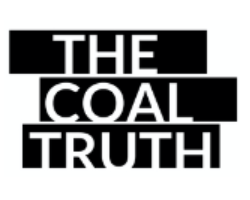The Coal Truth Part 2: Competitiveness

November 11, 2018 - You’ve heard the myths...now hear The Coal Truth.
Coal Myth 2: Coal power is no longer necessary because natural gas and others outcompete it.
The Coal Truth: Coal power is the best solution for millions of Americans and billions around the world, providing the most reliable, affordable power.
- Communities around the world should choose the energy that is most reliable, affordable, and safe.
- Coal power is often the most reliable solution; it has such extreme reliability it can handle a month's delay in fuel supply.
- Coal power often has the lowest prices--with far more long-term stability than natural gas prices.
- Modern coal power is safe, featuring low emissions levels that are perfectly healthy for communities.
- The best policy: Communities should choose the energy sources that are the best combination of reliable, affordable, and safe--instead of the government discriminating against coal power.
Coal Myth 2: Coal power is no longer necessary because natural gas and others outcompete it.
Myth Part 1: Solar and wind are quickly becoming cheaper than coal.
The Coal Truth: Because solar and wind are unreliable and require constant backup they are far more expensive than coal and other "reliables." [1]
Myth Part 2: Utilities are replacing coal plants with natural gas plants because coal can't compete.
The Coal Truth: While natural gas is sometimes the cheapest solution, utilities are usually replacing coal plants at great cost because anti-coal policies force them to.
Myth Part 3: Therefore we shouldn't be worried about the destruction of the American coal industry--it's going the way of the horse and buggy industry.
The Coal Truth: The American coal industry provides the best power for millions at home and abroad--destroying it means going backwards, not forwards.
The Coal Truth: Coal power is the best solution for millions of Americans and billions around the world, providing the most reliable, affordable power.
Assessing the benefits: Communities around the world should choose the energy that is most reliable, affordable, and safe.
- Around the world, people are voluntarily adopting coal as the best source of energy to meet their needs. In 2016 coal was over 28% of world energy consumption. [2]
- The U.S. Energy Information Administration projects that coal consumption will continue to rise until 2050 and that India will more than double its coal consumption over that time period. [3]
- Coal power is often the most reliable solution; it is easy to stockpile in vast amounts at the site of a power plant and is less vulnerable to supply interruptions from extreme weather or other disasters.
- Coal power often has the lowest price--with far more long-term stability than natural gas prices--which is why in many regions coal remains the dominant power source. [4]
.png)
(7).png)
- Coal is easy to transport compared to natural gas or oil, a globally traded commodity, and is abundantly available in the U.S., which are good conditions for lasting supply of affordable fuel.
- The U.S. has an estimated 20% or more of the world’s proved coal reserves, which is enough to last for over 300 years at current production levels, even if there is no technological advancement. [5]
Assessing the costs: Modern coal power is safe, featuring low emissions levels that are perfectly healthy for communities.
- Human health does not require eliminating coal emissions but bringing them down to safe levels: just as a certain dose of Tylenol is safe but a high dose can be deadly, the same is true for coal byproducts such as Sulfur Dioxide.
- Thanks to improved coal technology, since 1980 Sulfur Dioxide levels in the U.S. have been reduced by 87% and since 2000 the levels of particulate matter smaller than 2.5 micrometers has decrease 42%.
- No demonstrable harm to human health has been established for concentrations at today’s levels. [6]
The best policy: Communities should choose the energy sources that are the best combination of reliable, affordable, and safe--instead of the government discriminating against coal power.
[1] Federal Association of the German Energy and Water Industries (BDEW) Strompreisanalyse January 2018; Institute for Energy Research - The Levelized Cost of electricity from Existing Generation Sources; Eurostat Energy Main Tables for Denmark
[2] BP statistical Review of World Energy
[3] U.S. EIA International Energy Outlook 2017
[4] U.S. EIA Annual Coal Report; U.S. EIA U.S. Natural Gas Electric Power Price; U.S. EIA Coal Data Browser; U.S. EIA Natural Gas Data
[5] BP statistical Review of World Energy
[6] U.S. EPA Sulfur Dioxide Trends; U.S. EPA PM2.5 Trends. CDC found little correlation between sources of human emissions and asthma prevalence and found an increase of asthma incidences since 1980, despite decreasing air pollution. U.S. CDC Asthma Data, Statistics, and Surveillance; James E. Enstrom - Fine Particulate Matter and Total Mortality in Cancer Prevention Study Cohort Reanalysis (2017); S. Stanley Young, Richard L. Smith, Keneth K. Lopiano, Air quality and acute deaths in California, 2000–2012, Regulatory Toxicology and Pharmacology, Volume 88, 2017, Pages 173-184, ISSN 0273-2300.

